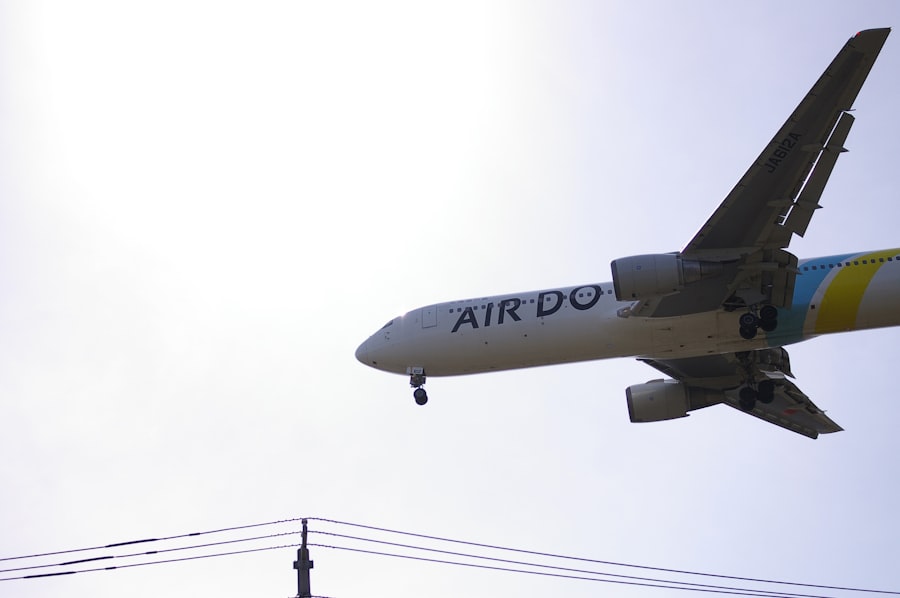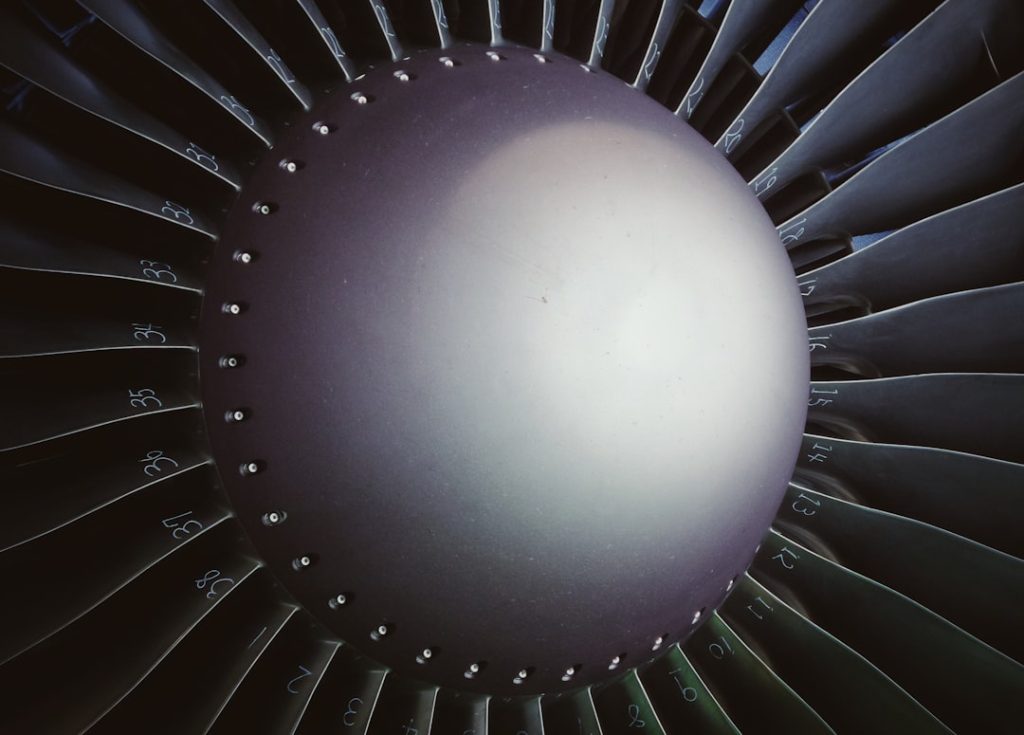The aerospace industry is a multifaceted sector that encompasses the design, development, and production of aircraft, spacecraft, and related systems and equipment. This industry plays a pivotal role in global transportation, national defense, and scientific exploration. It is characterized by its high level of technological innovation and significant investment in research and development.
The aerospace sector is not only vital for commercial air travel but also for military operations and space exploration, making it a cornerstone of modern civilization. The industry is divided into two primary segments: commercial aviation and defense aerospace. Commercial aviation focuses on the manufacture of passenger and cargo aircraft, while defense aerospace involves the production of military aircraft, missiles, and space systems.
The interplay between these segments drives advancements in technology, safety, and efficiency. As the world becomes increasingly interconnected, the demand for air travel continues to rise, prompting companies within the aerospace sector to innovate and expand their capabilities to meet the needs of a growing global population.
Key Takeaways
- The aerospace industry encompasses both commercial and defense sectors, with companies like Boeing, SpaceX, Lockheed Martin, Airbus, Northrop Grumman, and Blue Origin leading the way in innovation and technology.
- Boeing is a key player in both commercial and defense aerospace, with a strong focus on aircraft manufacturing and defense systems.
- SpaceX is revolutionizing space travel with its reusable rocket technology and ambitious plans for Mars colonization.
- Lockheed Martin is at the forefront of advancing military and civil aerospace technology, with a focus on cutting-edge aircraft and defense systems.
- Airbus is a major player in commercial aviation, known for its innovative aircraft designs and commitment to sustainability.
Boeing: A Leader in Commercial and Defense Aerospace
Boeing has long been recognized as a titan in the aerospace industry, with a legacy that dates back to its founding in 1916. The company is renowned for its commercial aircraft, including the iconic 737 and 787 Dreamliner, which have set benchmarks for fuel efficiency and passenger comfort. Boeing’s commitment to innovation is evident in its use of advanced materials and technologies, such as composite structures that reduce weight and improve performance.
The 787 Dreamliner, for instance, utilizes carbon-fiber-reinforced polymer, which contributes to a significant reduction in fuel consumption compared to traditional aluminum aircraft. In addition to its commercial endeavors, Boeing is a key player in defense aerospace. The company manufactures military aircraft such as the F/A-18 Super Hornet and the P-8 Poseidon, which are integral to the operational capabilities of various armed forces around the world.
Boeing’s defense division also focuses on advanced technologies like unmanned aerial vehicles (UAVs) and missile systems. The integration of cutting-edge technology into military applications not only enhances operational effectiveness but also ensures that defense forces remain at the forefront of modern warfare capabilities.
SpaceX: Pioneering the Future of Space Travel

SpaceX has emerged as a revolutionary force in the aerospace sector since its inception in 2002. Founded by Elon Musk with the ambitious goal of reducing space transportation costs and enabling the colonization of Mars, SpaceX has achieved remarkable milestones that have reshaped the landscape of space exploration. The Falcon 1 was the first privately developed liquid-fueled rocket to reach orbit, marking a significant achievement for private spaceflight.
This success laid the groundwork for subsequent developments, including the Falcon 9 and Falcon Heavy rockets. One of SpaceX’s most notable innovations is the development of reusable rocket technology. The Falcon 9’s first stage is designed to return to Earth and land vertically after launch, allowing it to be refurbished and reused for multiple missions.
This approach has drastically reduced launch costs and increased the frequency of space missions. Additionally, SpaceX’s Crew Dragon spacecraft has successfully transported astronauts to the International Space Station (ISS), demonstrating the company’s capability in human spaceflight. With ongoing projects like Starship, which aims to facilitate interplanetary travel, SpaceX continues to push the boundaries of what is possible in aerospace.
Lockheed Martin: Advancing Military and Civil Aerospace Technology
| Category | Metric |
|---|---|
| Military Aerospace | Number of military aircraft produced |
| Military Aerospace | Amount of military aircraft maintenance and support services provided |
| Civil Aerospace | Number of commercial aircraft produced |
| Civil Aerospace | Amount of civil aviation technology and services developed |
Lockheed Martin stands as a cornerstone of both military and civil aerospace technology, with a history that spans over a century. The company is best known for its advanced military aircraft, including the F-22 Raptor and F-35 Lightning II, which represent the pinnacle of stealth technology and multirole capabilities. The F-35 program, in particular, has garnered attention for its innovative design that incorporates advanced avionics, sensor fusion, and networked warfare capabilities, making it a game-changer in modern aerial combat.
Beyond military applications, Lockheed Martin is also involved in civil aerospace initiatives. The company has made significant contributions to satellite technology and space exploration through its work on programs like the Orion spacecraft, designed for deep-space missions. Lockheed Martin’s expertise in systems integration allows it to develop complex aerospace solutions that meet both governmental and commercial needs.
The company’s commitment to research and development ensures that it remains at the forefront of technological advancements in aerospace.
Airbus: Revolutionizing Commercial Aviation
Airbus has established itself as a formidable competitor to Boeing in the commercial aviation sector since its founding in 1970. The company is known for its innovative aircraft designs that prioritize efficiency and passenger experience. The A320 family of aircraft has become one of the best-selling commercial jets globally due to its fuel efficiency and operational flexibility.
Airbus’s introduction of the A380 superjumbo jet further revolutionized air travel by offering unprecedented capacity while maintaining comfort. Airbus has also embraced sustainability as a core principle in its operations. The company is actively exploring alternative fuels and hybrid-electric propulsion systems to reduce carbon emissions from air travel.
Initiatives like the ZEROe project aim to develop hydrogen-powered aircraft by 2035, showcasing Airbus’s commitment to leading the industry toward a more sustainable future. By investing in research and development focused on environmental impact, Airbus is positioning itself as a forward-thinking leader in commercial aviation.
Northrop Grumman: Innovating in Aerospace and Defense

Northrop Grumman is a key player in both aerospace and defense sectors, known for its cutting-edge technologies that enhance national security and advance aerospace capabilities. The company specializes in unmanned systems, cyber solutions, C4ISR (Command, Control, Communications, Computers, Intelligence, Surveillance, and Reconnaissance), and advanced weaponry. One of its most notable contributions is the development of the Global Hawk UAV, which provides high-altitude surveillance capabilities essential for modern military operations.
In addition to unmanned systems, Northrop Grumman is heavily involved in space exploration initiatives. The company plays a critical role in NASA’s Artemis program, which aims to return humans to the Moon by 2024 and eventually send astronauts to Mars. Northrop Grumman’s Cygnus spacecraft is responsible for delivering cargo to the ISS as part of NASA’s Commercial Resupply Services program.
This involvement underscores Northrop Grumman’s commitment to advancing both defense technologies and space exploration efforts.
Blue Origin: Pushing Boundaries in Space Exploration
Founded by Amazon’s Jeff Bezos in 2000, Blue Origin has emerged as a significant player in the burgeoning space tourism industry while also contributing to broader space exploration efforts. The company’s New Shepard suborbital vehicle is designed for space tourism flights that provide passengers with a brief experience of weightlessness before returning safely to Earth. This venture represents a new frontier in commercial space travel, making space more accessible to private individuals.
Blue Origin’s ambitions extend beyond suborbital flights; it is also developing the New Glenn orbital launch vehicle aimed at providing reliable access to space for satellites and other payloads. Furthermore, Blue Origin is actively involved in NASA’s Artemis program through its development of the Human Landing System (HLS), which will facilitate lunar landings as part of humanity’s return to the Moon. By focusing on reusable rocket technology and sustainable practices, Blue Origin aims to create a future where millions can live and work in space.
The Future of Aerospace and Space Exploration
The aerospace industry stands at a pivotal moment characterized by rapid technological advancements and an increasing focus on sustainability. Companies like Boeing, SpaceX, Lockheed Martin, Airbus, Northrop Grumman, and Blue Origin are not only shaping current capabilities but also laying the groundwork for future innovations that will redefine air travel and space exploration. As global demand for air travel continues to rise alongside an urgent need for environmentally responsible practices, the industry must adapt by embracing new technologies such as electric propulsion systems and alternative fuels.
Moreover, as nations collaborate on ambitious projects like lunar bases and Mars colonization efforts, international partnerships will become increasingly important in advancing aerospace capabilities. The future promises exciting developments that will push humanity further into space while ensuring that air travel remains safe, efficient, and sustainable on Earth. As we look ahead, it is clear that the aerospace industry will continue to inspire generations with its relentless pursuit of innovation and exploration beyond our planet’s atmosphere.


